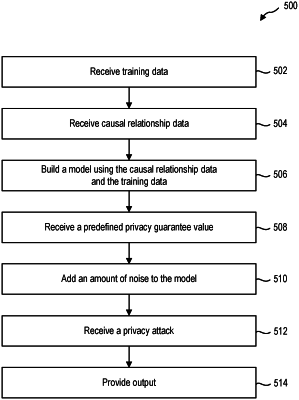| CPC G06F 21/577 (2013.01) [G06F 21/55 (2013.01); G06F 21/6245 (2013.01); G06N 5/04 (2013.01); G06N 20/00 (2019.01); G06F 2221/031 (2013.01); G06F 2221/033 (2013.01)] | 19 Claims |

|
1. A method for protecting against privacy attacks on machine learning models, comprising:
training a machine learning model using a set of training data and causal relationship data, wherein the causal relationship data identifies, in the set of training data, a subset of features that have a causal relationship with an outcome, and wherein the machine learning model includes a function from the subset of features to the outcome;
receiving a predefined privacy guarantee value;
adding an amount of noise to the machine learning model such that the machine learning model has a privacy guarantee value equivalent to or stronger than the predefined privacy guarantee value, wherein an amount of noise added to the machine learning model is based on a level of protection against privacy attacks and the amount of noise is added to a level of the machine learning model based on a desired accuracy level of the machine learning model; and
provide an output by the machine learning model based on the causal relationships between the subset of features and the outcome.
|